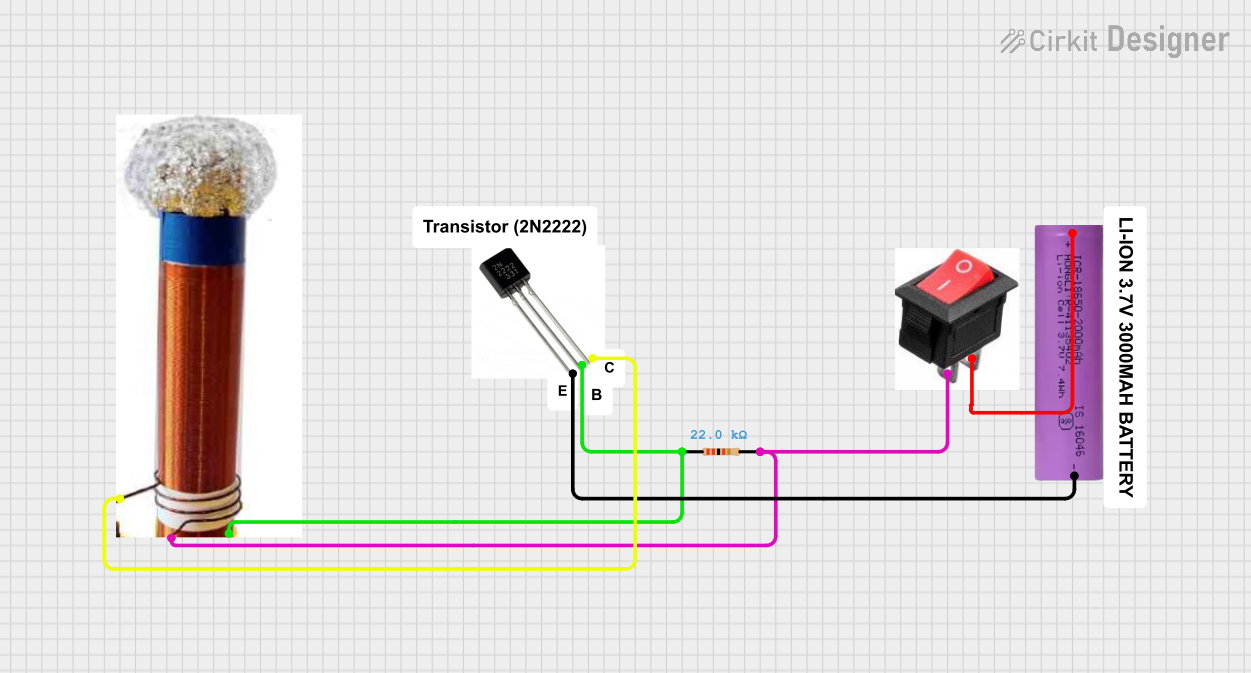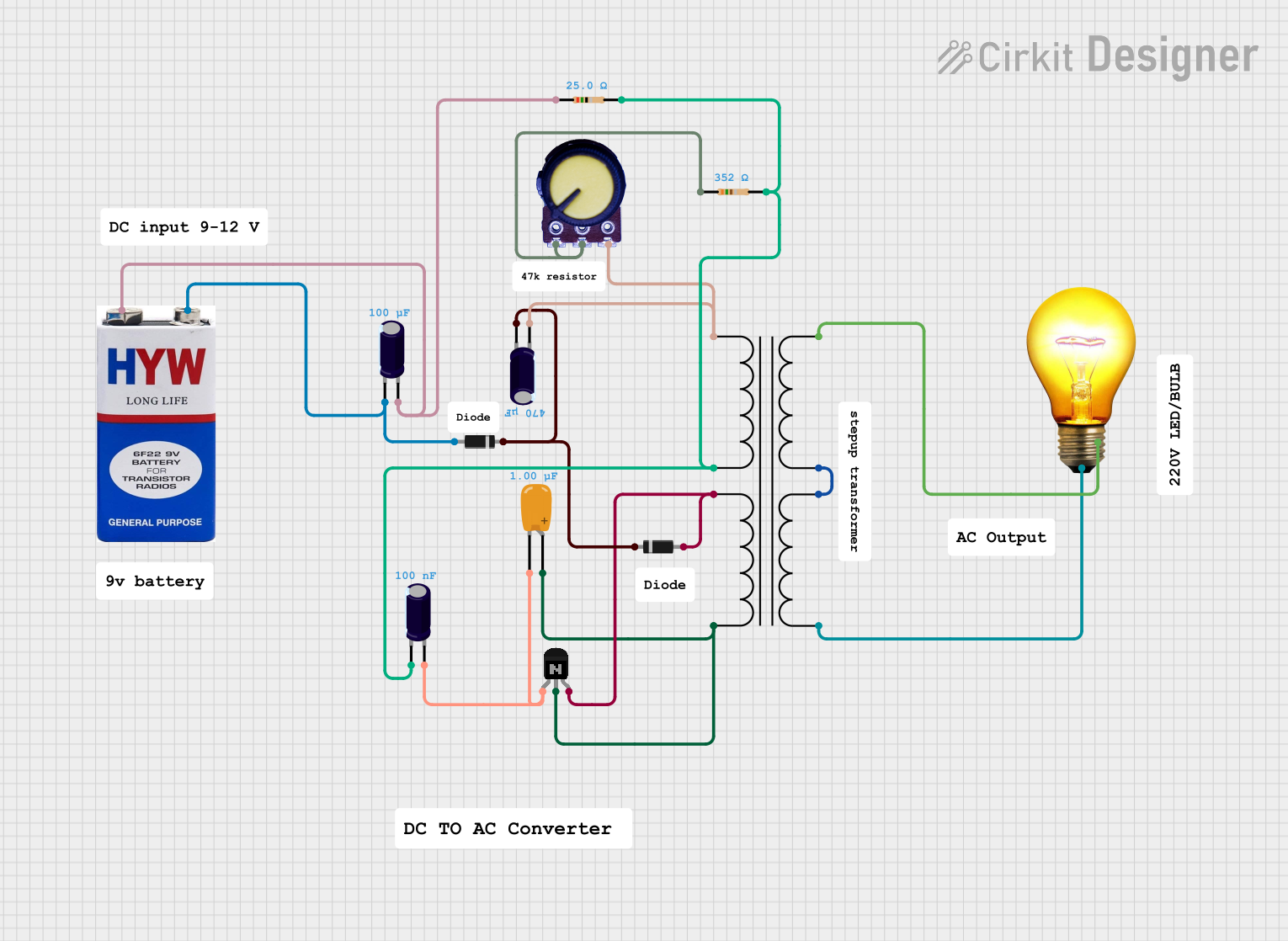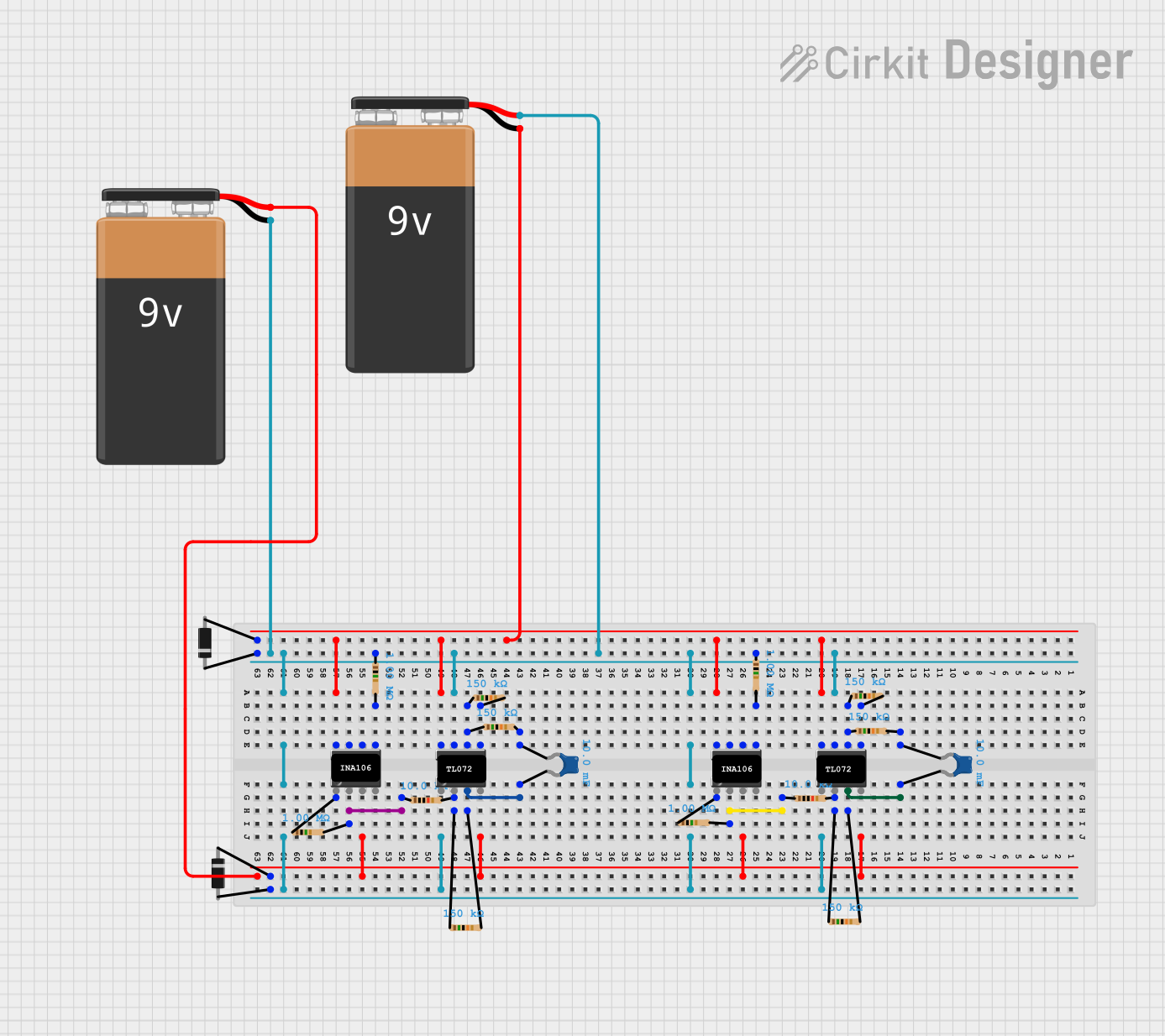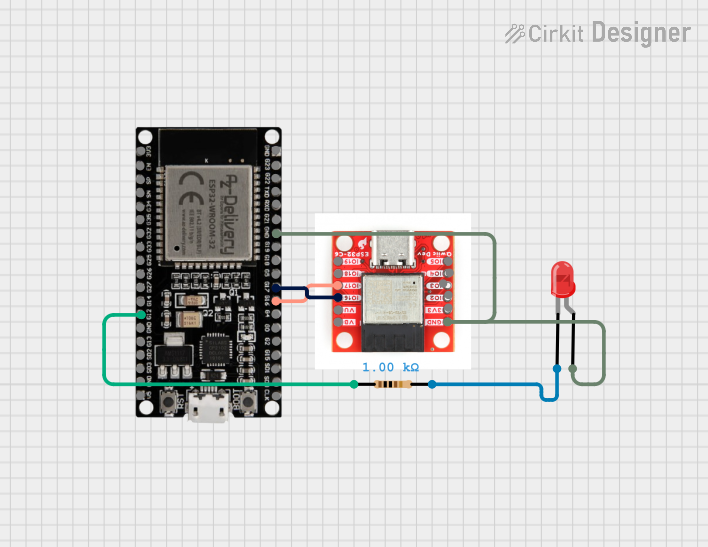
How to Use SECONDARY & PRIMARY: Examples, Pinouts, and Specs

 Design with SECONDARY & PRIMARY in Cirkit Designer
Design with SECONDARY & PRIMARY in Cirkit DesignerIntroduction
The transformer is a fundamental component in electrical engineering, serving as a device that transfers electrical energy between two or more circuits through electromagnetic induction. Transformers are widely used in power distribution systems, audio systems, and various electronic devices to step-up or step-down voltage levels according to the needs of the application.
Common Applications and Use Cases
- Power Distribution: Transformers are essential for the transmission and distribution of electrical power. They step-up the voltage for efficient long-distance transmission and step-down the voltage for safe local distribution.
- Audio Equipment: In audio systems, transformers are used to match impedances between different components, such as amplifiers and speakers.
- Isolation: Transformers provide galvanic isolation between circuits, which is crucial for safety and noise reduction.
- Voltage Conversion: Electronic devices often use transformers to convert the mains voltage to a lower level suitable for the internal circuitry.
Technical Specifications
Key Technical Details
- Voltage Rating: The maximum input (primary) and output (secondary) voltages the transformer can handle.
- Current Rating: The maximum current the transformer windings can carry without overheating.
- Power Rating: The total amount of power the transformer can transfer from primary to secondary.
- Frequency Range: The operational frequency range over which the transformer can function efficiently.
- Isolation Voltage: The maximum voltage that can be applied between primary and secondary without breakdown.
Pin Configuration and Descriptions
| Pin Number | Description | Notes |
|---|---|---|
| P1 | Primary Winding Start | Connect to AC voltage source |
| P2 | Primary Winding End | Returns to AC voltage source |
| S1 | Secondary Winding Start | Output AC voltage start |
| S2 | Secondary Winding End | Output AC voltage return |
Usage Instructions
How to Use the Transformer in a Circuit
- Identify Transformer Ratings: Ensure the transformer's voltage and current ratings match your application requirements.
- Circuit Integration: Connect the primary winding (P1 and P2) to the AC voltage source. The secondary winding (S1 and S2) will provide the transformed voltage.
- Load Connection: Connect the load to the secondary winding, ensuring that the load does not exceed the transformer's power rating.
- Safety Precautions: Always fuse the primary side to protect against overcurrent conditions.
Important Considerations and Best Practices
- Thermal Management: Ensure adequate cooling for the transformer to prevent overheating.
- Electromagnetic Interference (EMI): Place the transformer away from sensitive components to minimize EMI.
- Correct Orientation: Follow the manufacturer's datasheet for proper pin orientation and winding connections.
Troubleshooting and FAQs
Common Issues Users Might Face
- Overheating: Caused by exceeding the current or power ratings. Check the load and ensure proper ventilation.
- Humming Noise: This can be due to mechanical vibrations. Ensure the transformer is securely mounted.
- No Output Voltage: Check for proper connections and ensure the input voltage is present and within specifications.
Solutions and Tips for Troubleshooting
- Check Connections: Verify all connections are secure and correct according to the transformer's datasheet.
- Measure Input Voltage: Use a multimeter to confirm the presence and level of the input voltage.
- Inspect for Damage: Look for signs of physical damage or burn marks that could indicate a fault.
Example Code for Arduino UNO
If you're using the transformer to power an Arduino UNO, ensure that the secondary voltage is appropriate for the board (typically 7-12V for the DC input jack). Below is an example code snippet for reading an analog voltage with an Arduino UNO:
// Define the analog input pin
int analogInputPin = A0;
void setup() {
// Initialize serial communication at 9600 bits per second:
Serial.begin(9600);
}
void loop() {
// Read the input on analog pin 0:
int sensorValue = analogRead(analogInputPin);
// Convert the analog reading to voltage (assuming 5V for the Arduino board):
float voltage = sensorValue * (5.0 / 1023.0);
// Print out the voltage
Serial.println(voltage);
// Delay for a bit to get stable readings
delay(1000);
}
Remember, the above code assumes that the transformer's secondary voltage has been rectified and regulated to be compatible with the Arduino's operating voltage. Always use a voltage regulator to ensure the voltage is within safe limits for your microcontroller.
Explore Projects Built with SECONDARY & PRIMARY

 Open Project in Cirkit Designer
Open Project in Cirkit Designer
 Open Project in Cirkit Designer
Open Project in Cirkit Designer
 Open Project in Cirkit Designer
Open Project in Cirkit Designer
 Open Project in Cirkit Designer
Open Project in Cirkit DesignerExplore Projects Built with SECONDARY & PRIMARY

 Open Project in Cirkit Designer
Open Project in Cirkit Designer
 Open Project in Cirkit Designer
Open Project in Cirkit Designer
 Open Project in Cirkit Designer
Open Project in Cirkit Designer
 Open Project in Cirkit Designer
Open Project in Cirkit Designer